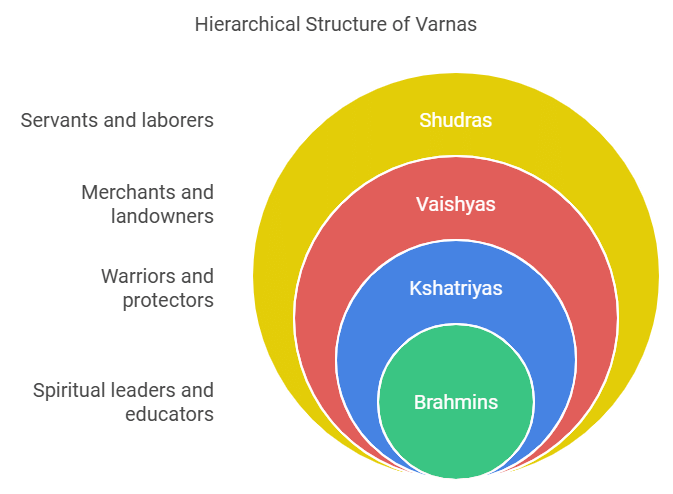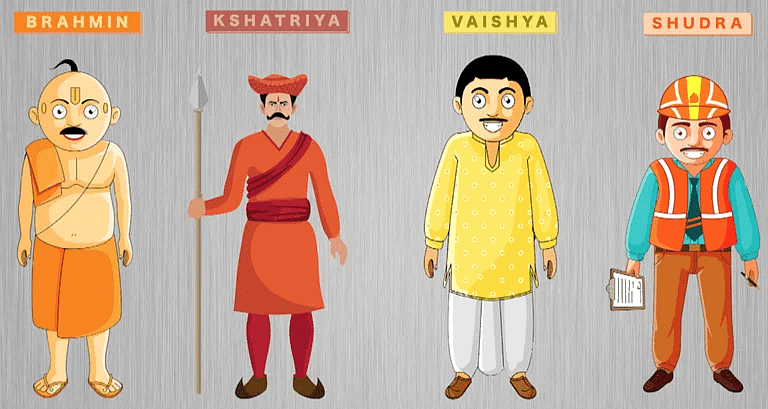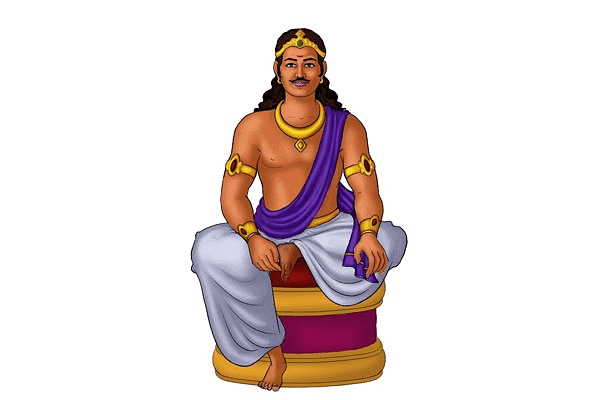Class 6 History Chapter 5 Notes - Kingdoms, Kings and an Early Republic
How some men became rulers?
Around 3000 years ago, we found some changes had taken place in the ways in which rajas were chosen. Some men were then recognized as rajas by performing very big sacrifices.
- Ashvamedha or horse sacrifice was one such ritual in which a horse was let loose to wander freely and it was guarded by the raja’s men.

- If the horse wandered into the kingdoms of other rajas and they stopped it, they had to fight.
- If they allowed the horse to pass, it meant that they accepted that the raja who wanted to perform the sacrifice was stronger than them. These rajas were then invited to the sacrifice.
- The raja who organized the sacrifice was recognized as being very powerful and all those who came brought gifts for him.
Varnas

- The priests divided people into four groups called Varnas.
- According to them, each Varna had a different set of functions.
- These groups were decided on the basis of birth.

Brahmin: They were expected to study and teach the Vedas, perform sacrifices and receive gifts.
Kshatriyas: They were the rulers and were expected to fight battles and protect people.
Vish or the Vaishyas: They were expected to be farmers, herders and traders. Both the Kshatriyas and the Vaishyas could perform sacrifices.
Shudras: They had to serve the other three groups and could not perform any rituals. Often, women were also grouped with them. They were not allowed to study the Vedas.
Who were Janapadas?
- The rajas who performed big sacrifices were then recognised as being rajas of janapadas rather than janas.
- The word janapada means the land where the jana set its foot and settled down.

Archaeologists have excavated a number of settlements in these janapadas such as Purana Qila in Delhi, Hastinapura near Meerut, and Atranjikhera near Etah.
- They found that people lived in huts, and kept cattle as well as other animals.
- They also grew a variety of crops such as rice, wheat, barley, pulses, sugarcane, sesame and mustard.
- They made earthen pots. One special type of pottery found at these sites is known as Painted Grey Ware.
Who were Mahajanapadas?
About 2500 years ago, some janapadas became more important than others, and were known as mahajanapadas. Most mahajanapadas had a capital city, many of these were fortified which means that huge walls of wood, brick or stone were built around them.

Forts were probably built because:
- People were afraid of attacks from other kings and needed protection.
- Some rulers wanted to show how rich and powerful they were by building large, tall and impressive walls around their cities.
- The land and the people living inside the fortified area could be controlled more easily by the king.
- Building such huge walls required a great deal of planning.
The new rajas began maintaining armies. Soldiers were paid regular salaries and maintained by the king throughout the year.
Importance of Taxes during Mahajanapadas
The rulers of the mahajanapadas were building huge forts and maintaining big armies so they needed more resources. To meet their requirement they started collecting regular taxes. 
- Taxes on crops were collected from peoples because most people were farmers. Usually, the tax was fixed at 1/6th of what was produced. This was known as bhaga or a share.
- There were taxes on crafts persons as well. These could have been in the form of labour.
- Herders were also expected to pay taxes in the form of animals and animal produce.
- There were also taxes on goods that were bought and sold through the trade.
- Hunters and gatherers also had to provide forest produce to the raja as tax.
What changes took place in agriculture around this time?
There were two major changes in agriculture around mahajanapadas time.
- The growing use of iron ploughshares: This means heavy, clayey soil could be turned over better than with a wooden ploughshare so that more grain could be produced. The growing use of iron ploughshares helped in more grain production.
- People began transplanting paddy: People began transplanting paddy which meant that instead of scattering seeds on the ground, from which plants would sprout, saplings were grown and then planted in the fields. This led to increased production, as many more plants survived.
 |
Download the notes
Chapter Notes: Kingdoms, Kings and Early Republic
|
Download as PDF |
A closer look: Magadha
- Magadha became the most important mahajanapada in about two hundred years.
- Many rivers such as the Ganga and Son flowed through Magadha which helped in transport, water supplies, and making the land fertile.
- Two powerful rulers of Magadha were Bimbisara and Ajatasattu.
- The first capital of Magadha was Rajagriha in Bihar and the second was Pataliputra.

A closer look: Vajji
- Vajji, with its capital at Vaishali (Bihar), was under a different form of government, known as Gana or Sangha.
- In a Gana or a Sangha, there were many rulers, each one was known as a raja.
- The rajas performed rituals together and met in assemblies.
- Women, dasas and kammakaras could not participate in these assemblies.
- Both the Buddha and the Mahavira belonged to ganas or sanghas.
- The last of the sanghas were conquered by Gupta rulers around 1500 years ago.
Some Important Questions
Q.1. Why did the rajas of mahajanapadas build forts?
Ans: The rajas of mahajanapadas built forts to defend their capital city from attacks by other rajas. It is also said that they wanted to show how rich and powerful they were by building large and powerful walls. The more practical reason could be that it was easier to govern fortified cities.
Q.2. In what ways are present-day elections different from the ways in which rulers were chosen in janapadas?
In janapadas, men became ‘rajas’ by performing the Ashvamedha sacrifice. The rajas who let the Ashvamedha horse pass through their lands meant that they accepted the supremacy of the raja who wanted to perform the sacrifice.
In modern times, leaders are elected through a democratic system. Every citizen who is 18 years or older has the right to cast their vote. The candidates who win the majority of votes become the leaders.
|
69 videos|387 docs|80 tests
|
FAQs on Class 6 History Chapter 5 Notes - Kingdoms, Kings and an Early Republic
| 1. How did some men become rulers in ancient India? |  |
| 2. What are Varnas in the context of ancient Indian society? |  |
| 3. Who were the Janapadas, and how did they function? |  |
| 4. What were Mahajanapadas and how did they differ from Janapadas? |  |
| 5. Why were taxes important during the Mahajanapadas? |  |





























